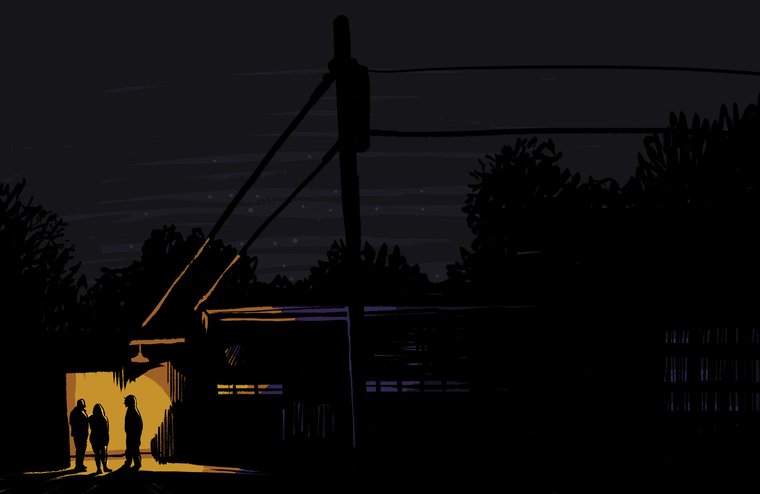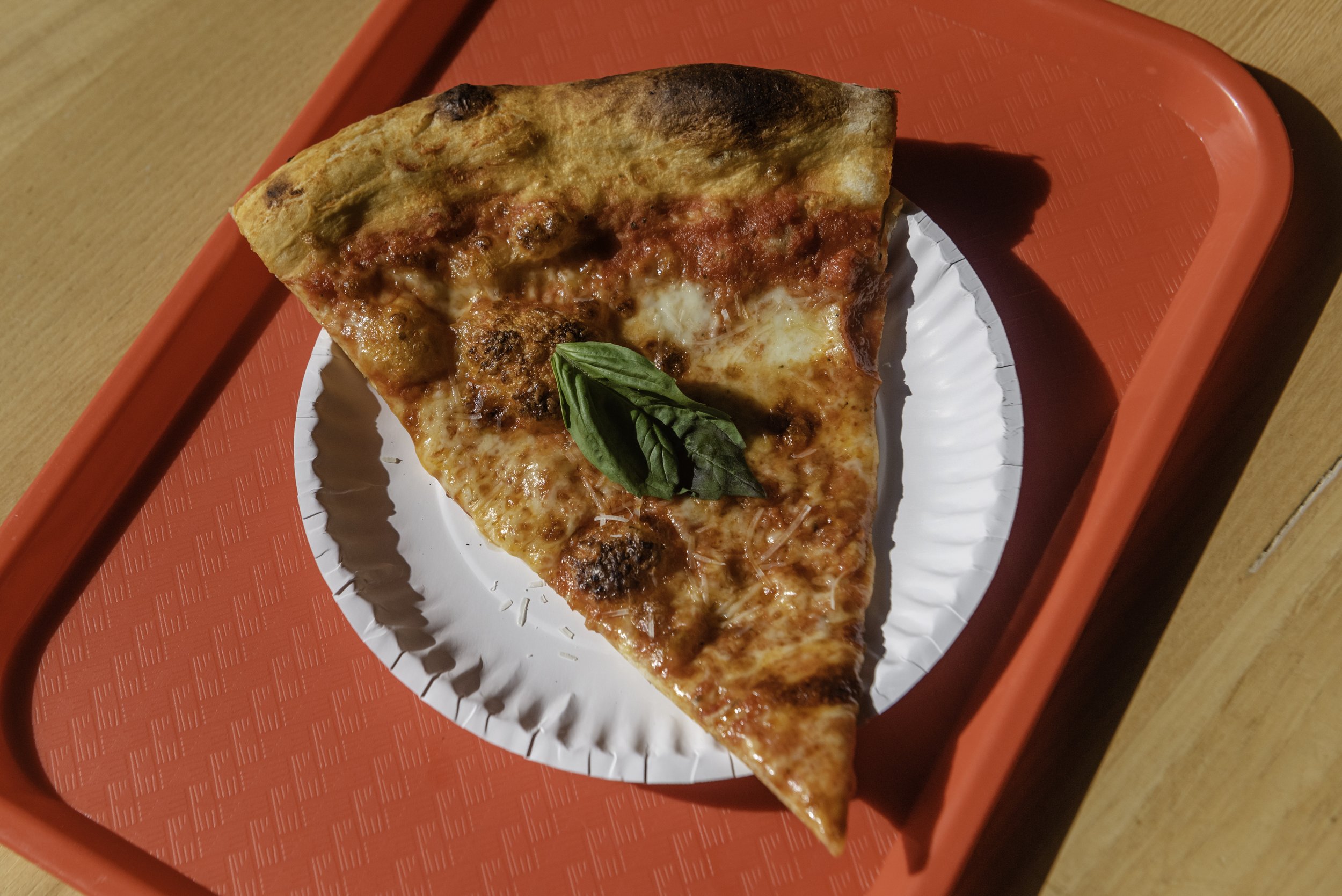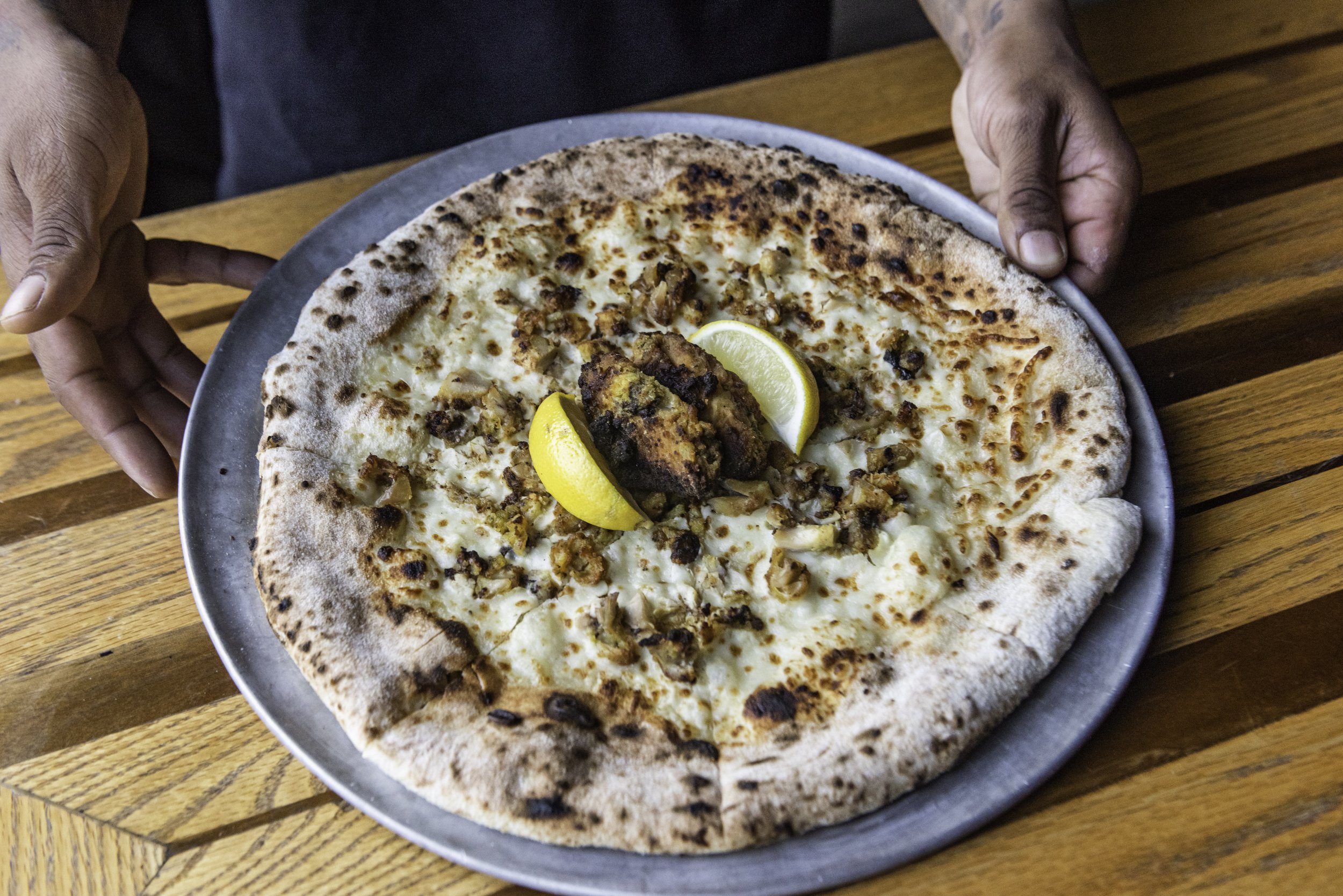The Saints & Sinners of St. Mary’s Strip
Bartender Jacob Burris' tribute to the undead keeping San Antonio alive.
Illustration: Bekci Kozel
The Saint Mary’s Strip in San Antonio, Texas, is a sliver, a crescent, a lazy C only slightly committed to the curve, a bow, an arch, a lean, a tilt, a twist, a yaw. It is a drunk that arches, bends, buckles, cambers and careens, leans, veers, warps, elbows, slants, and limps along, keeping one hand unsteadily on the graffitied wall after four too many. It is a stretch of rickety one-story homes and run-down buildings converted into half-assed, bottom-of-the-barrel but beloved bars and restaurants. Some good, some bad, some really bad, two or three really good. It is an alcohol-fueled mistake, a morning regret, a late-night line in the rain for the best tacos in town, followed by a mid-afternoon hangover fed on barbacoa and chilaquiles. It is endless cans of Lone Stars, shots of Jameson, one & ones, chamoy shots, picklebacks, slammed daiquiris, Topos, and cigarettes. It is a street full of deadbeats, dropouts, has-beens, strip rats, strippers, cokeheads, potheads, drunks, alcoholics, abused, abusers, used, users, musicians, artists, con artists, “photographers,” “models,” squatters, dealers, pushers, and politicians. That is to say, it is a street full of chefs, line cooks, hosts, food runners, dishwashers, servers, bartenders, managers, and owners. They are the undead keeping this city alive.
San Antonio is made up of a series of concentric circles, with Texas State Highway Loop 1604 as the outer, and Interstate 410 (Connally Loop), the inner. Crisscrossing both are Interstates 10, 35, 37, and Highway 281. All in all, it makes a target with an X drawn through, as if warning outsiders not to enter. The center of the X is downtown, with the touristtrapping Riverwalk and undistinguished, dustcolored buildings. That is not, as tourists would be led to believe, the heart. The heart is a little higher. Known both aff ectionately and contemptuously to locals as “The Strip.” The area in question, North St. Mary’s Street, is a section of road between 281 and 10, from the YMCA to the ACL, though it is less and more than that. The actual start is somewhere near the cross street of E. Mistletoe by The Candlelight and ends around Grayson between Hi-Tones and The Phantom Room.
Mondays through Wednesdays are quiet, with the majority of business being done by those that work on The Strip. It is the seemingly endless cycle of the service industry. Work the job, get out, take the tips, the wages, the not-nearly-enough paychecks, and make it to one of the bars before close, giving it back to the fellow service industry sisters and brothers, or trade it for the little blue baggies, or gamble it away in dollar size chunks on dice.
Thursdays are the first wave, the warning shot, the opening salvo. Parking becomes a chore. People unrecognizable from other parts of town, other cities, show up to disrupt the utopian system. These are the college kids, the nationals, the North, South, East, and Westsiders. Thirty percent tips become 15. Drink orders are set back a couple decades. Old Fashioneds become Jack and Cokes. Everything else becomes vodka. To open on a Friday and Saturday is to prepare for all-out war. Limes must be cut, cheap beers iced, salt ready to be rimmed and dressed. The hordes are coming, and they are bringing fights, brawls, broken windows, stolen purses, ruined restrooms, graffi tied walls, squealed tires, lost phones, and declined cards. Avoid full moons or Mercury Retrograde if you can. Stay home. Lock the doors. Hide. Don’t make eye contact. Wear silver.
After the rush, when the last of the customers are chased into the starless night, the doors are locked, the curtains closed, and the staff and occasional friendlies finally breathe out, maybe share a few drinks, all while cleaning the leftover mess. The street is quiet again. It belongs, once more, to the women and men who run it. A manager counts the stacks of scribbled-on receipts, deciphering the scrawl of drunken hieroglyphs, and pulls wrinkled bills out of jars, finding the occasional treasure of a twenty. Stories, because there are always stories, are sometimes shared until Sunday’s dawn. Those who have moved on from it, those who now sit in quiet cubicles, under the fluorescent lights, staring ceaselessly at glowing screens, will never admit to missing it, will never admit to preferring the fast death to the slow, will never admit that those glowing neons of The Strip still call to them in memories and dreams. And it is a street like so many others. There is one in every city. Except here the tacos are better.







